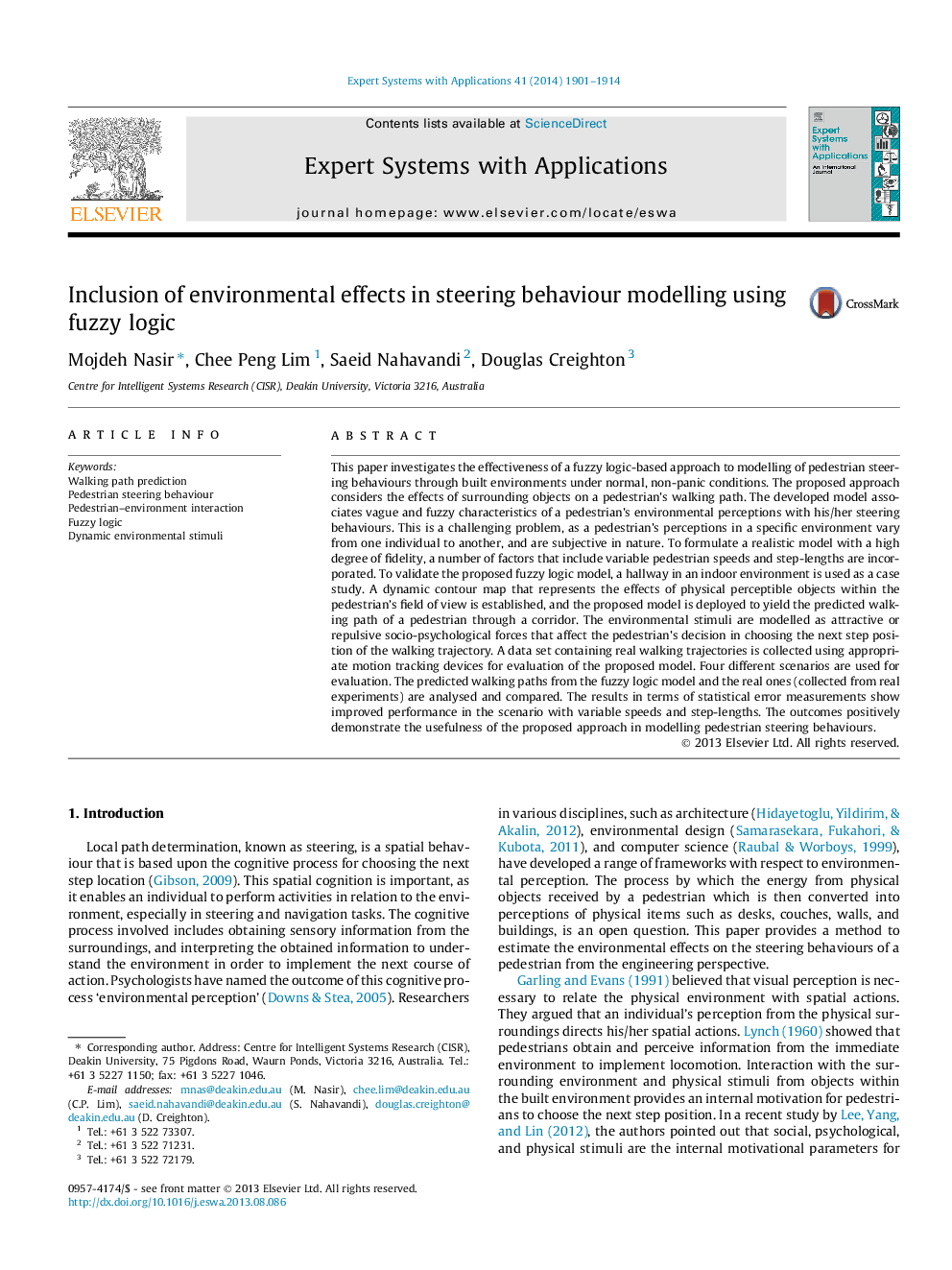ترجمه فارسی عنوان مقاله
گنجاندن اثرات زیست محیطی در مدل سازی رفتار سیستم فرمان با استفاده از منطق فازی
عنوان انگلیسی
Inclusion of environmental effects in steering behaviour modelling using fuzzy logic
| کد مقاله | سال انتشار | تعداد صفحات مقاله انگلیسی |
|---|---|---|
| 46366 | 2014 | 14 صفحه PDF |
منبع

Publisher : Elsevier - Science Direct (الزویر - ساینس دایرکت)
Journal : Expert Systems with Applications, Volume 41, Issue 4, Part 2, March 2014, Pages 1901–1914
ترجمه کلمات کلیدی
پیش بینی مسیر راه رفتن - رفتار سیستم فرمان عابر پیاده - تعامل عابر پیاده محیط زیست - منطق فازی - محرک های محیطی پویا
کلمات کلیدی انگلیسی
Walking path prediction; Pedestrian steering behaviour; Pedestrian–environment interaction; Fuzzy logic; Dynamic environmental stimuli

